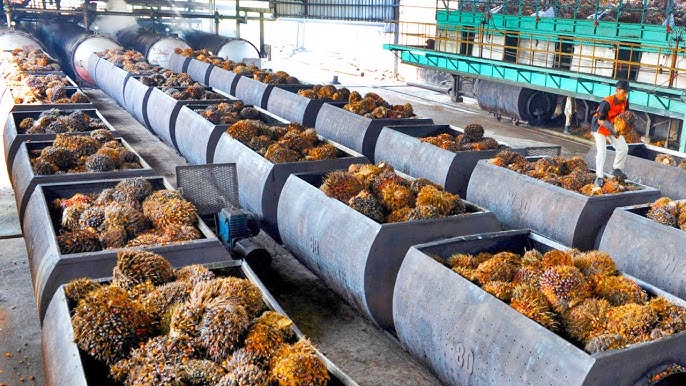Palm oil remains one of the most widely consumed edible oils in the world, found in a diverse array of food products such as snacks, baked goods, margarine, and ready-to-eat meals. As demand continues to rise, palm oil producers are under increasing pressure to improve oil recovery rates while maintaining food-grade quality and minimizing operational costs. Central to achieving this goal is the efficient performance of the palm oil extractor, a vital piece of machinery that separates crude palm oil (CPO) from the fruit’s mesocarp.
Today, thanks to advances in design and automation, modern extractors—offered by leading food processing equipment suppliers—are delivering higher oil yields, better product consistency, and more sustainable production outcomes. This article explores how palm oil extractors work, their importance in the edible palm oil value chain, and how innovation is driving improved performance across the industry.
The Role of Palm Oil Extractors in the Production Process
Palm oil production begins with the collection of fresh fruit bunches (FFBs) from oil palm plantations. After sterilization and threshing, the fruit is digested to break down the pulp and prepare it for oil extraction. At this stage, the digested mash is fed into a palm oil extractor, which applies mechanical pressure to squeeze out the oil.
Traditionally, single-screw presses were used for this purpose. While effective, they often left behind a significant amount of residual oil in the pressed fiber, reducing overall recovery rates. Today’s advanced extractors—including double-screw and hydraulic presses—are engineered to minimize this loss, making them critical for improving yield and profitability.
How Modern Palm Oil Extractors Improve Oil Recovery
Higher Extraction Efficiency
Modern extractors are designed with optimized screw geometry, pressure control, and high-capacity throughput. These features allow them to recover 1%–2% more oil than older equipment. Over time, this improved recovery can result in thousands of additional liters of oil, offering substantial revenue gains.
Reduced Residual Oil in Fiber Cake
Advanced palm oil extractors minimize oil retention in the discharged cake, bringing it down to as low as 4%–5%. This significantly reduces the volume of oil lost during the pressing stage and limits the need for reprocessing.
Consistent Product Quality
Uniform pressure and controlled mechanical action ensure that oil is extracted quickly and with minimal exposure to heat and oxidation. This helps preserve the oil’s quality, particularly its low free fatty acid (FFA) levels—crucial for refining into food-grade oil.
Continuous Operation for Higher Output
Many modern extractors operate continuously, ensuring a steady flow of processed material. This reduces downtime and supports the high-volume demands of edible oil production.
Types of Palm Oil Extractors and Their Applications
Single-Screw Presses
Still widely used in smaller or legacy operations, these machines apply pressure through a rotating screw within a cylindrical cage. They are cost-effective but generally yield lower recovery rates.
Double-Screw Presses (Twin-Screw)
These use two intermeshing screws for more uniform compression and greater oil displacement. Their design improves oil recovery, especially for high-fiber material, and is well suited for medium to large-scale edible palm oil producers.
Hydraulic Presses
Used less frequently but effective for specialty or small-batch processing, hydraulic extractors offer precise pressure control and minimal mechanical shear, preserving oil quality.
Integrated Extraction Systems
These systems combine digestion, pressing, and oil clarification in one unit and are ideal for compact, automated palm oil processing setups.
Contribution of Food Processing Equipment Suppliers
Leading food processing equipment suppliers play a vital role in providing advanced extraction solutions tailored to the palm oil industry. Their contributions include:
Custom equipment design based on capacity, processing speed, and fruit type
Turnkey solutions that integrate extractors with sterilizers, digesters, clarification units, and storage systems
Automation and monitoring technologies for real-time process control
Technical support and training to ensure optimal operation and maintenance
These suppliers help palm oil mills modernize their operations, improve efficiency, and comply with international food safety and quality standards such as HACCP, ISO 22000, and RSPO.
Enhancing Sustainability with Efficient Oil Recovery
Improved oil recovery doesn’t just benefit the bottom line—it also supports sustainable palm oil production. By minimizing waste and reducing the need for secondary processing, modern extractors help:
Lower energy and water consumption
Reduce emissions and effluent load from leftover oil in fibrous waste
Improve land-use efficiency by maximizing output per ton of FFBs
Sustainable practices are increasingly important for access to premium markets and partnerships with global food brands, many of which require traceability and environmental responsibility across the supply chain.
Looking Ahead: Smart Extraction Technology
The future of palm oil extraction is moving toward smart systems—automated, data-driven machines that optimize extraction based on real-time input conditions. Innovations on the horizon include:
Sensor-based oil quality monitoring during extraction
AI-powered process optimization for pressure and temperature control
Predictive maintenance tools to reduce equipment downtime
With support from forward-thinking food processing equipment suppliers, palm oil mills can adopt these technologies to stay competitive and meet the evolving demands of the edible oil market.
Conclusion
Modern palm oil extractors are essential to improving oil recovery and ensuring the consistent production of food-grade palm oil. By reducing waste, increasing yield, and preserving oil quality, these machines help processors maximize their return on investment and meet global food industry standards.
Backed by innovative food processing equipment suppliers, today’s extractors are more efficient, automated, and sustainable than ever before. As consumer expectations for quality and sustainability continue to grow, investing in high-performance extraction technology is not just a technical upgrade—it’s a strategic move toward long-term success in the edible palm oil sector.




